By Robert Bernstein
Huge thanks to UCSB Theater and Dance professor, choreographer and puppeteer Christina McCarthy for her wonderful Puppet Making Workshop at the UCSB Art, Design and Architecture Museum!
Here http://swt.org/events/puppetwo
Christina put in a lot of preparation work: Gathering creative scrap materials. And building dozens of puppet skeletons for us to embellish!
First, she showed off some more elaborate puppets such as this one:
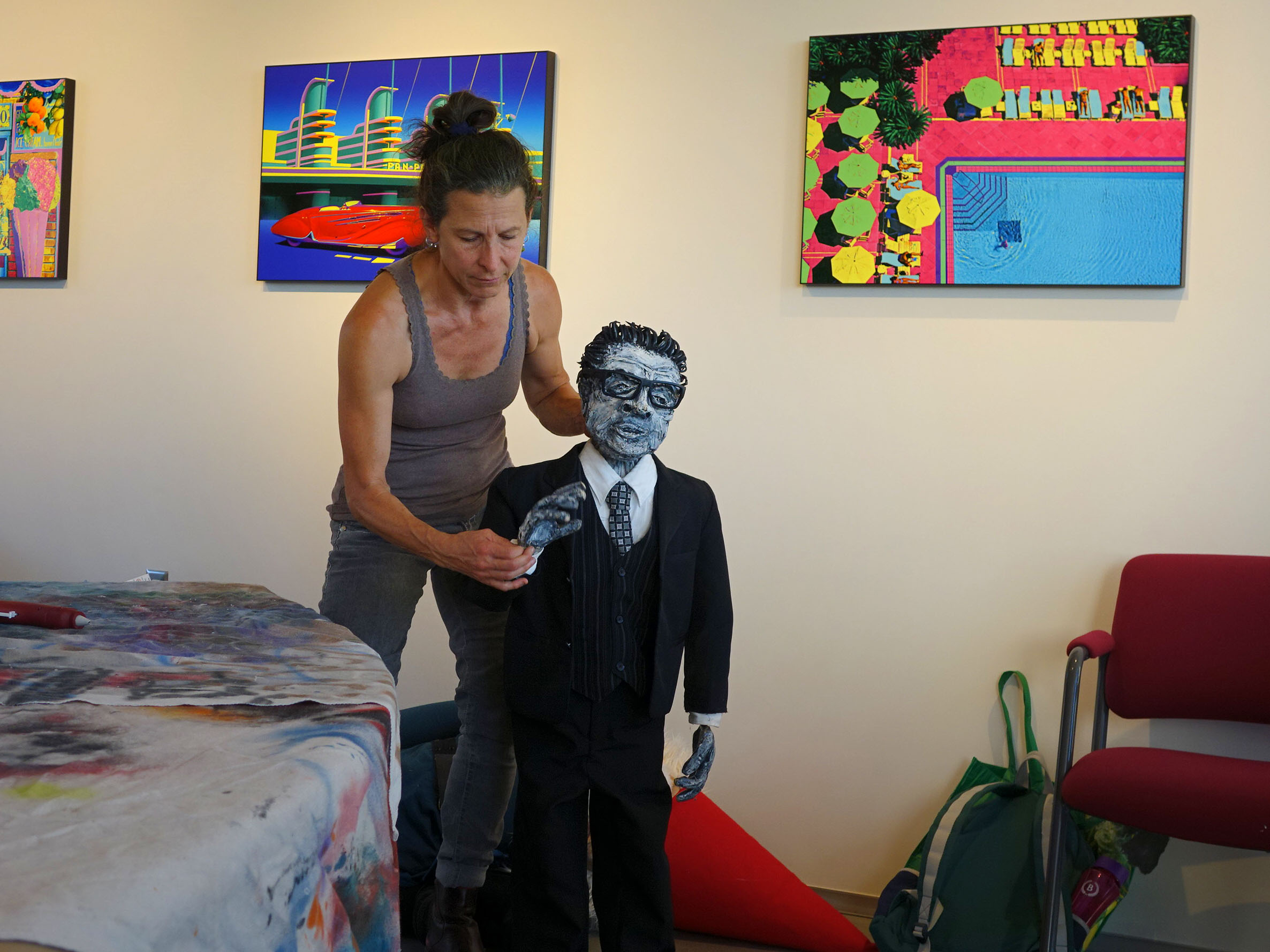
She showed how they are manipulated directly. And how they are engineered to move in a similar manner to real people. For example, the wrist on this puppet would not flop back beyond where a real wrist would.
Then she showed us the magic of her simple puppet skeleton. The arms are made of popsicle sticks tied together with rope. The rope is the key to making realistic limbs. Rope is the glue that ties the bones together. Some joints are meant to be tighter than others. Here she shows off the skeleton that we would build on:
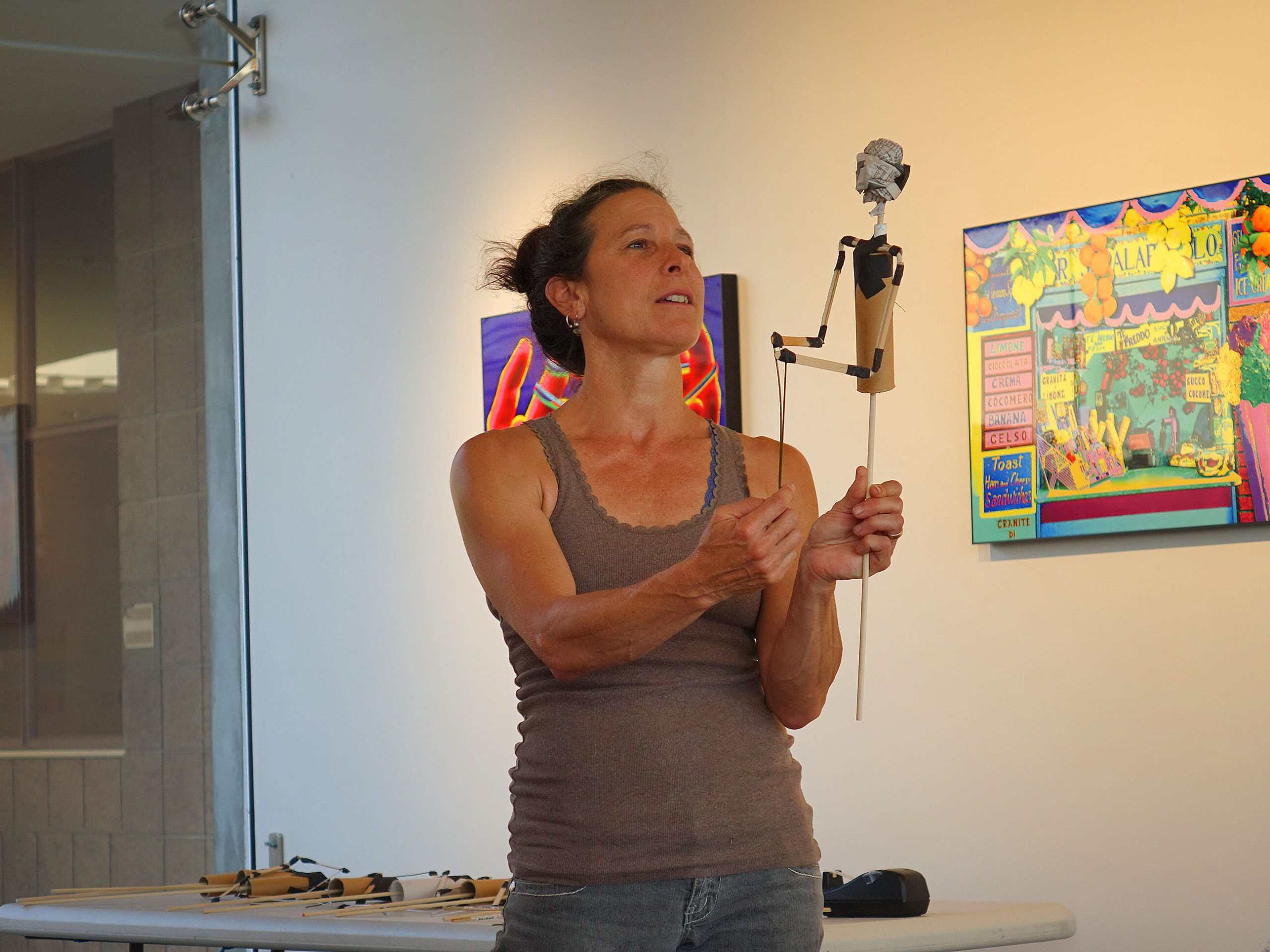
The first step was to tear a newspaper. Form it into a ball. Then tape it onto the neck of the skeleton:
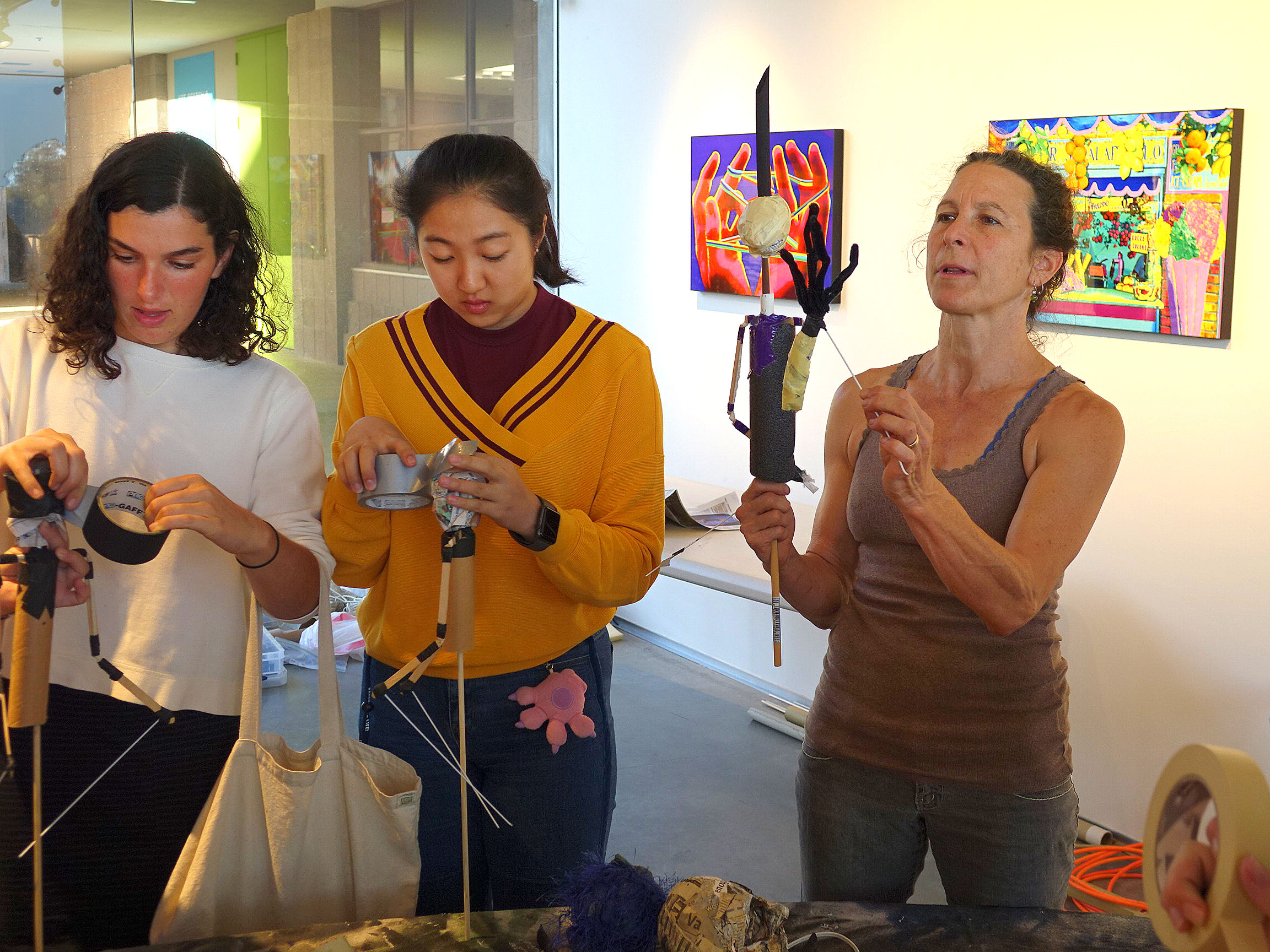
I was intrigued by the hands that Christina made out of pipe cleaners. She showed me the technique. First, several pipe cleaners are twisted together end to end. Then, they are formed continuously in the shape of fingers. Then, they are wrapped to form a palm. Then extended downward to form a wrist. Here is the result!
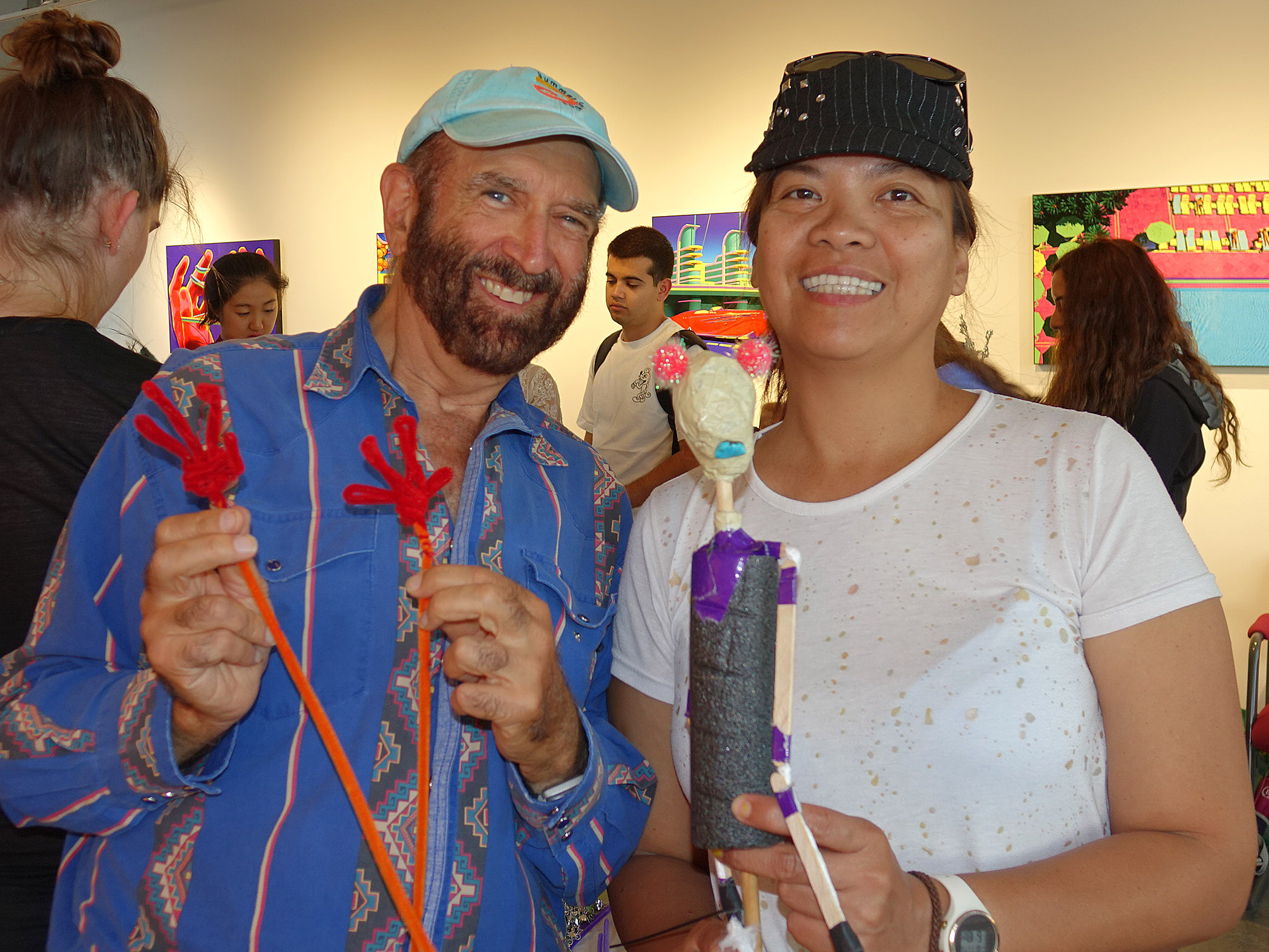
Then came a lot of individual creative opportunity! Decorating the head and face and body! This was one of my favorites because of the way the student had wrapped the breasts to form cleavage!
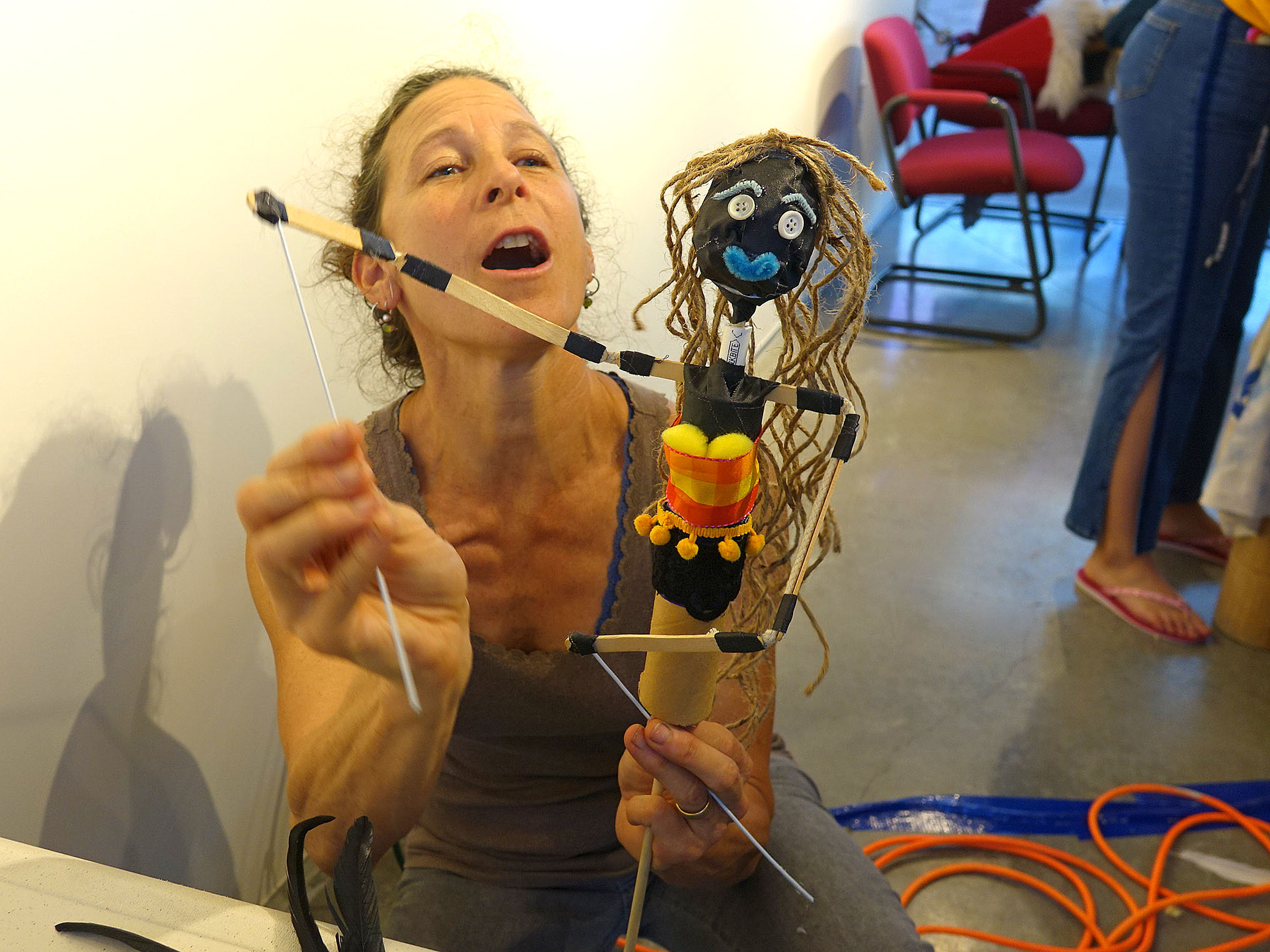
This student made creative use of feathers
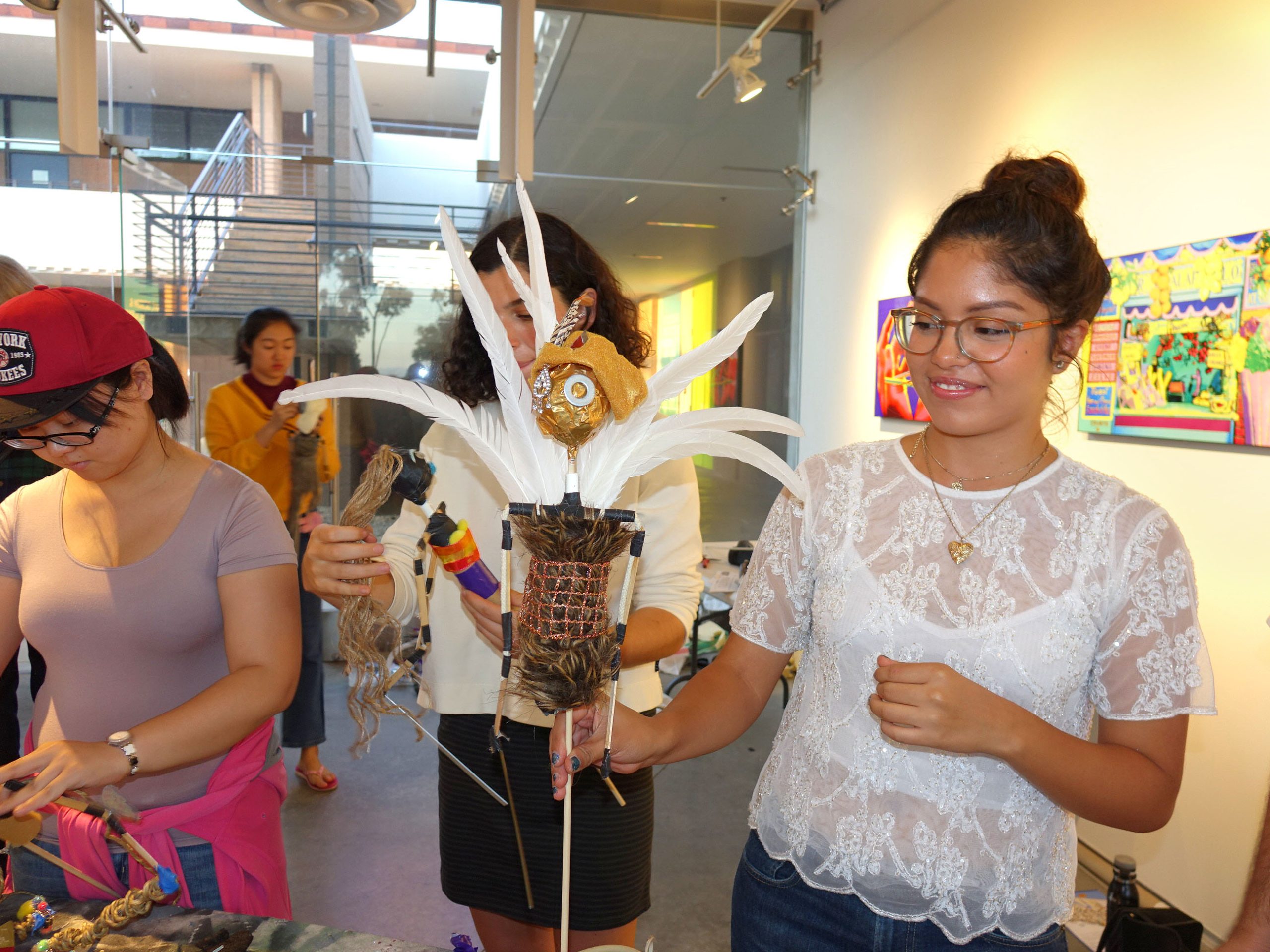
This guy made a do-rag for the puppet’s head
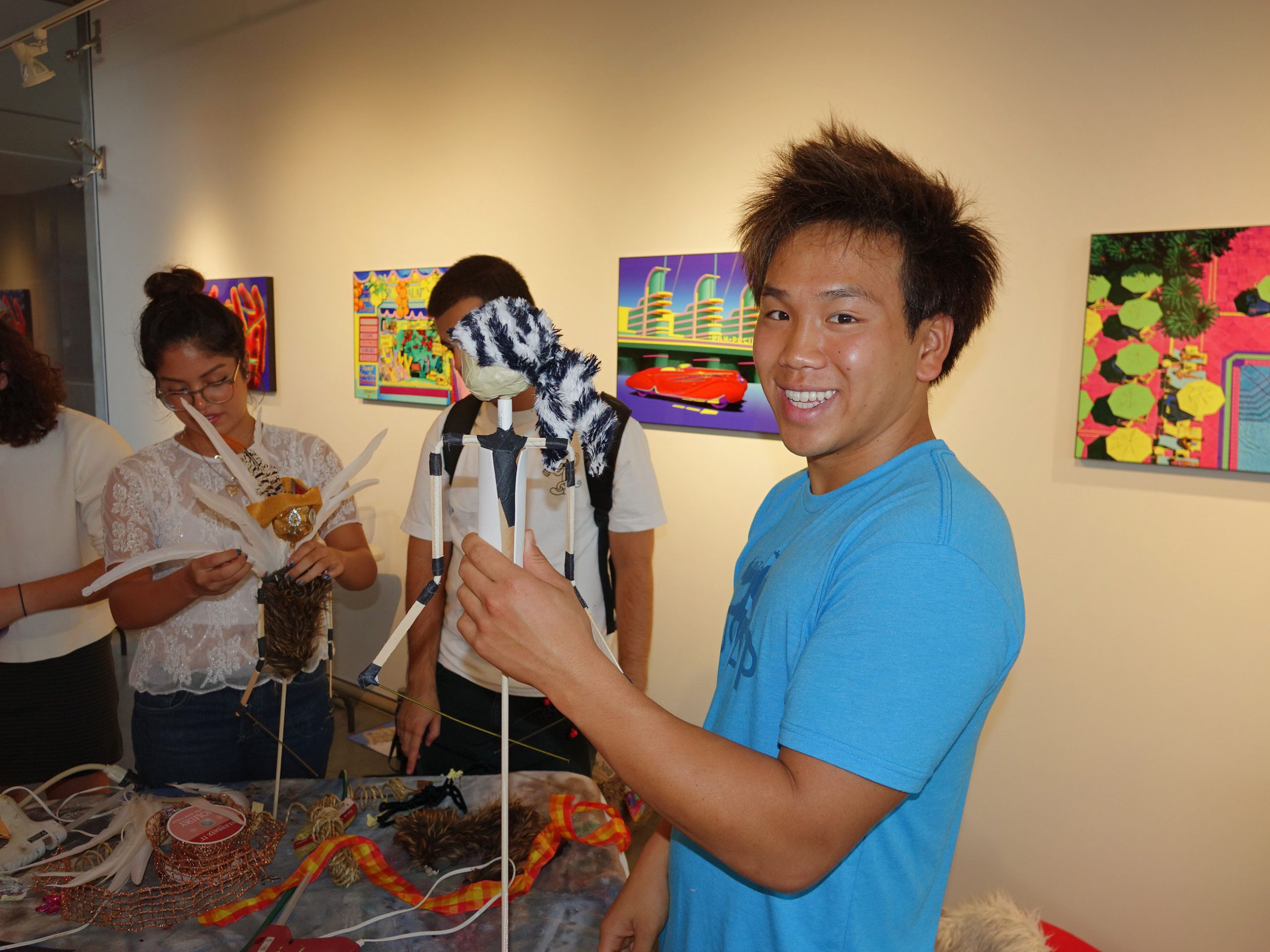
Local artist Mary Freericks showed off the furry head on her puppet
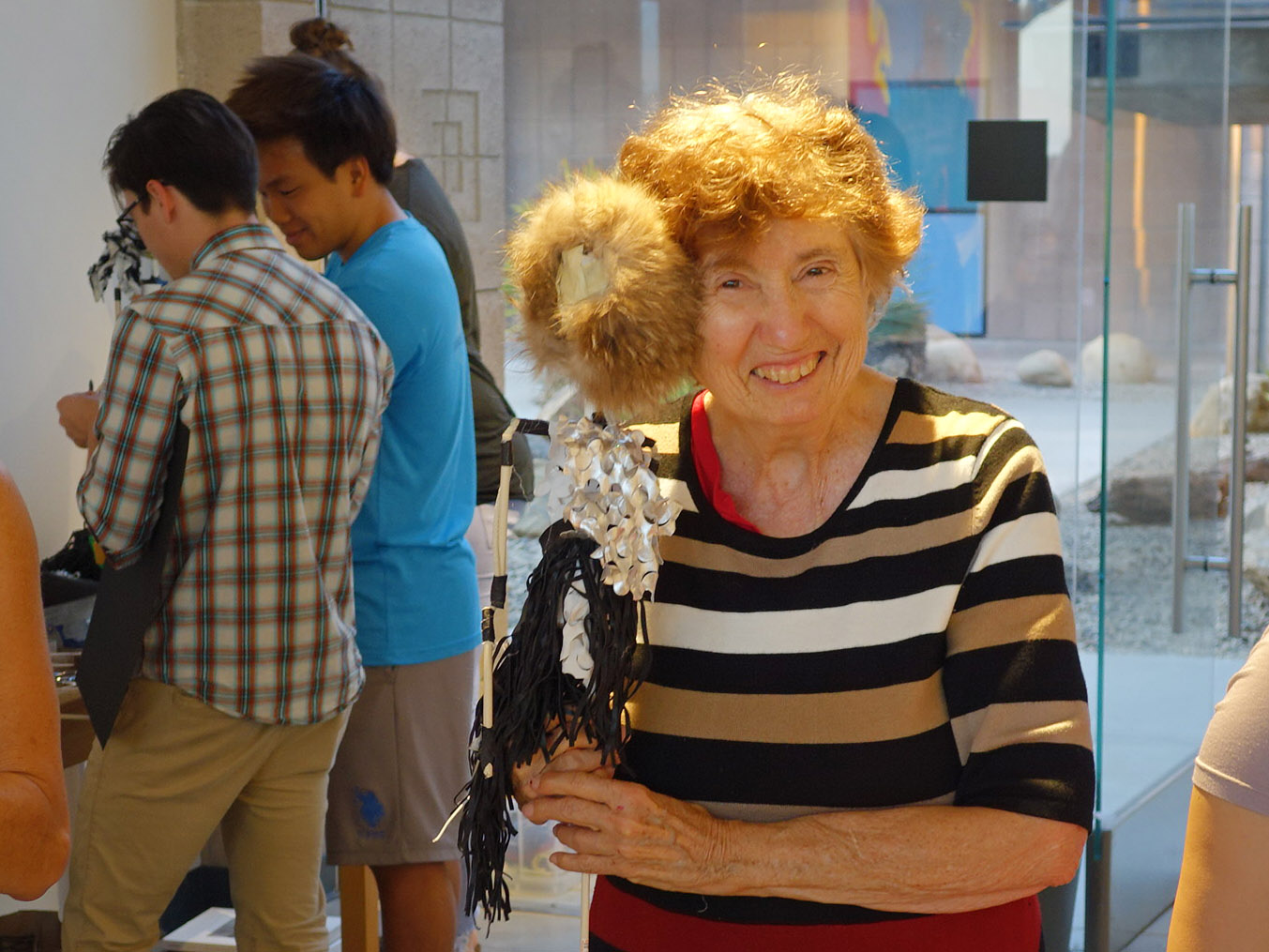
Hot glue was a quick way to attach a variety of materials to form a body and a dress!
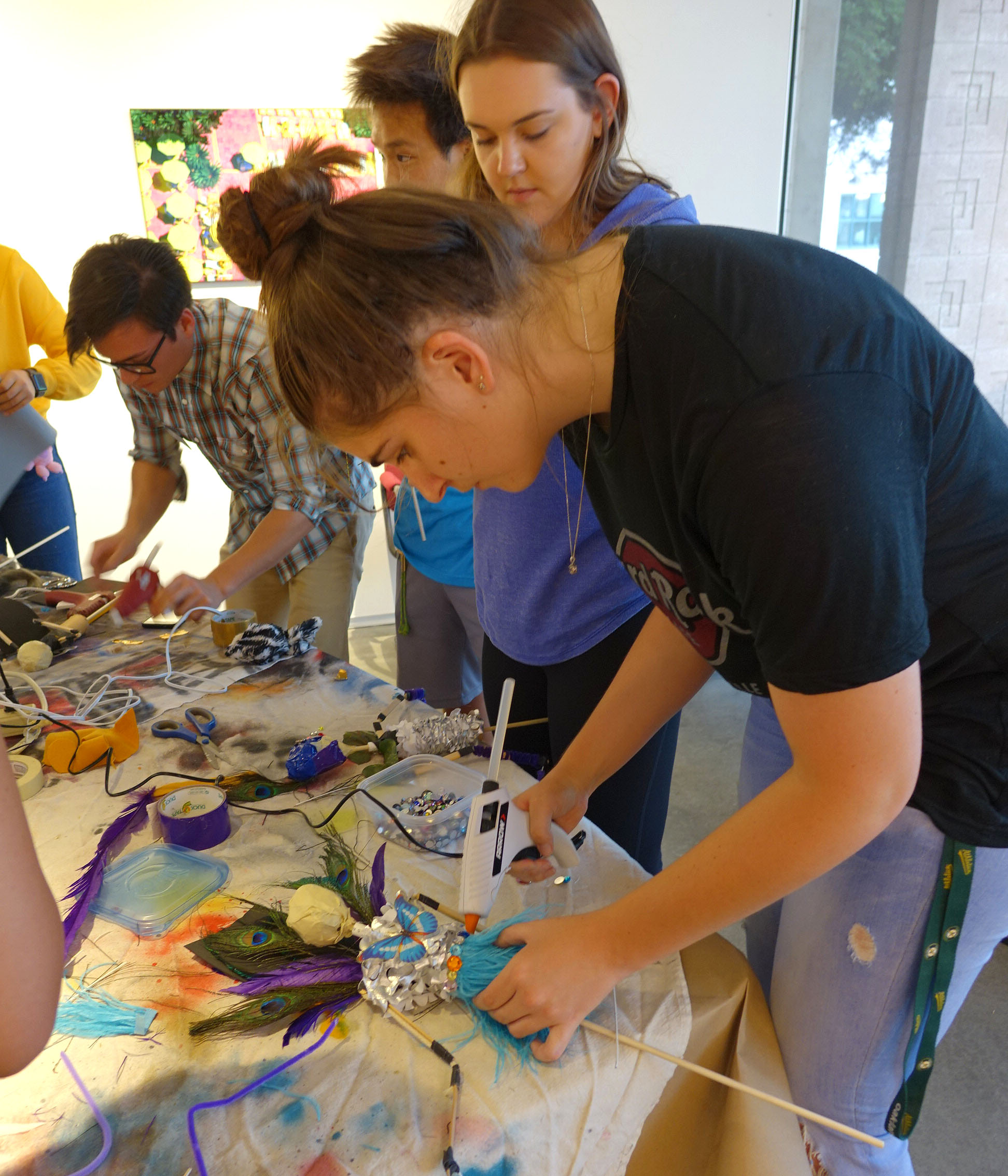
This guy got into the Halloween spirit!
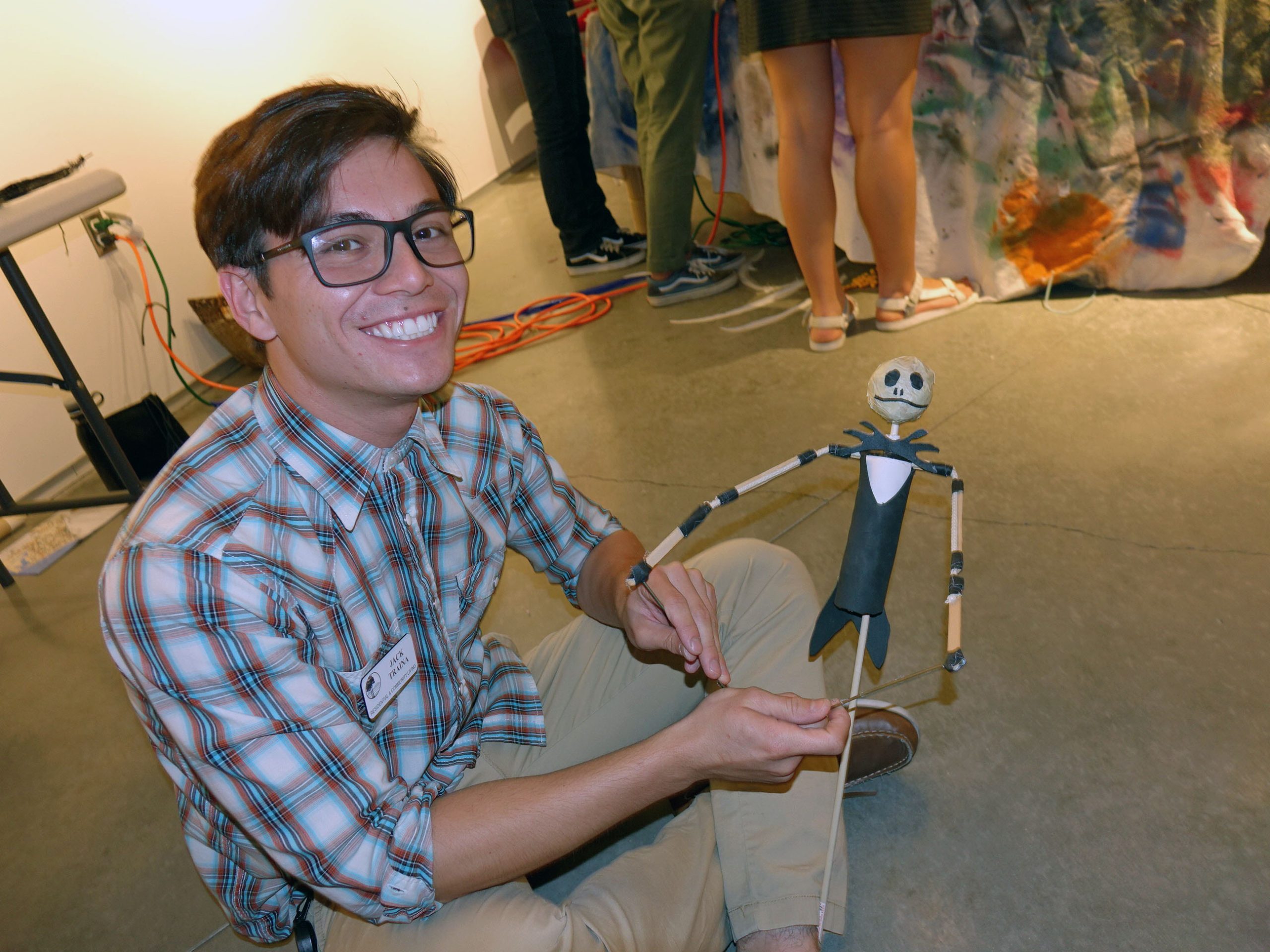
Christina McCarthy went on to show us how to manipulate the puppet. One hand held the shaft that went up to form the neck. The other hand held one or both wires attached to the arms. Surprisingly, that is
enough to stabilize the body. You can rotate the head and move the arms for some realistic expression!
She warned about the “Uncanny Valley”. If you make your puppet too realistic, people will find it creepy and imperfect. But if you keep it a bit cartoonish and whimsical, people will believe it is “alive” without feeling it is a failed version of a “real” person.
There is much more to learn. But it was a great start!
Christina mostly makes puppets as part of her theatrical and choreographing work. She participated in Puppetpalooza which I reported on earlier! Here was that article:
https://www.edhat.com/news/pup
I should add that the father of my childhood friend was Frank Ballard, who was a master puppeteer and professor at the University of Connecticut. Their house was filled with puppets and it just seemed normal as well as really cool!
In 2015 I visited the rural area where we lived in Connecticut and the University of Connecticut. And the Frank Ballard Museum of Puppetry there! Here are my photos of that!
http://swt.org/events/east2015




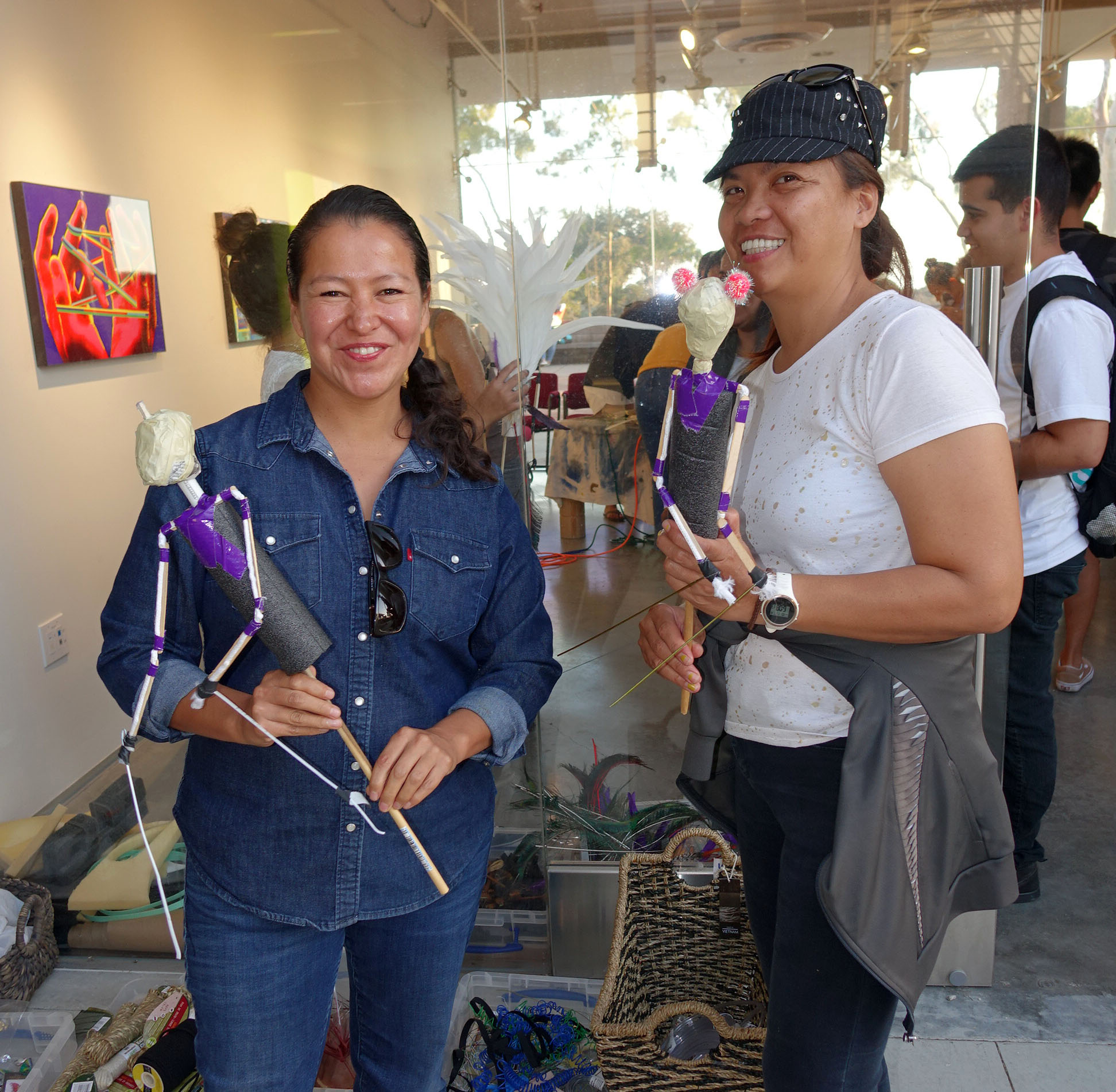
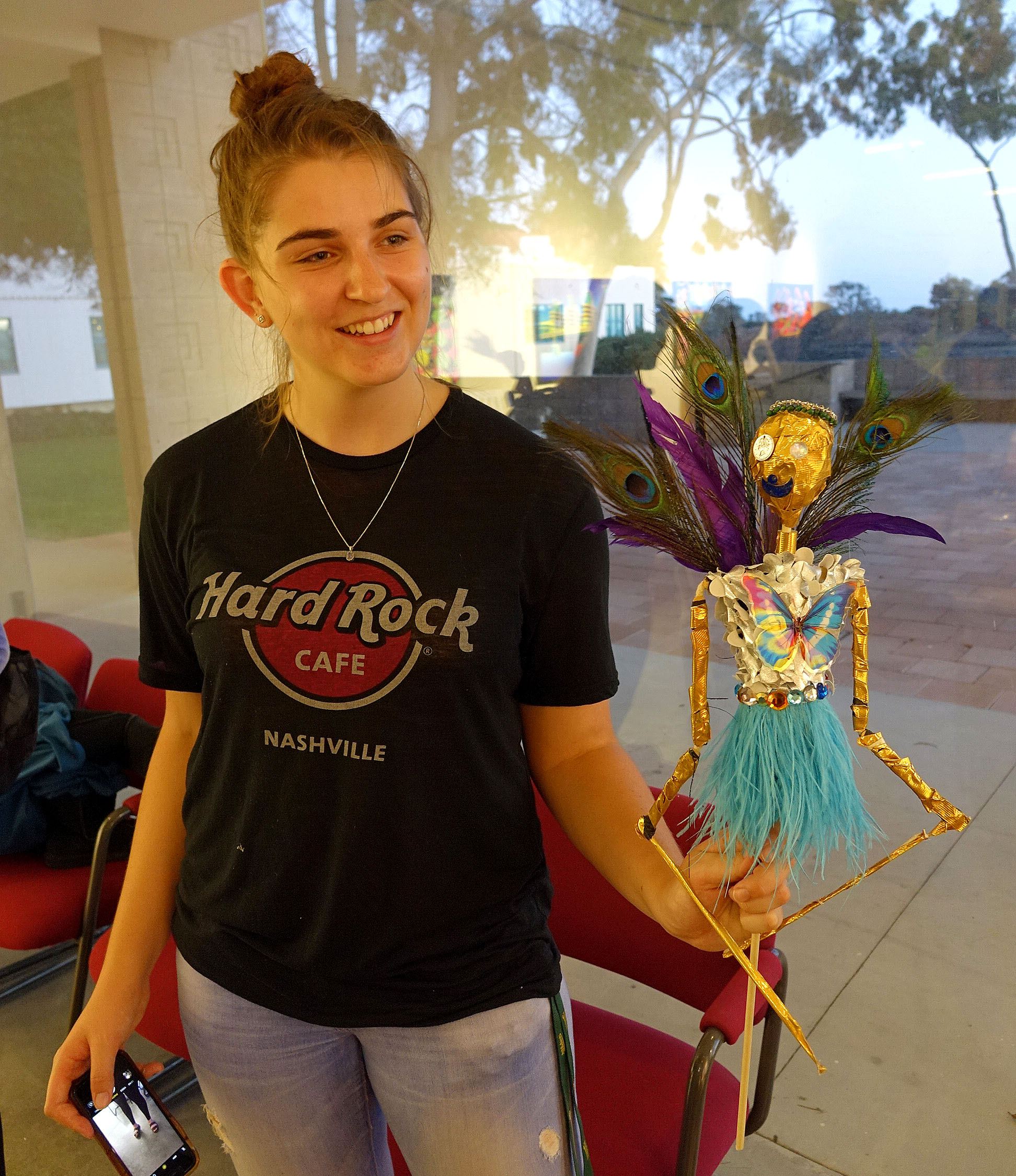

Comments
0 Comments deleted by Administrator